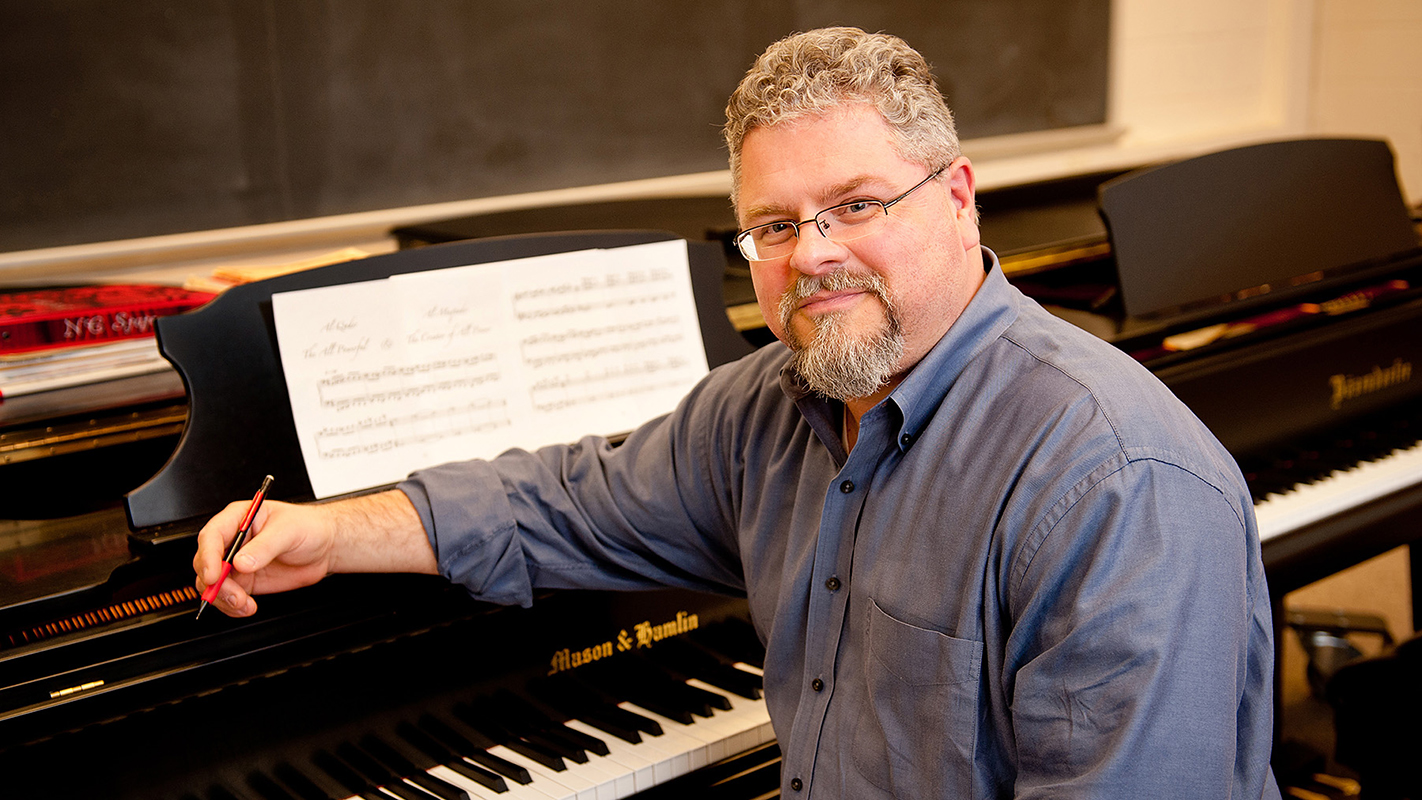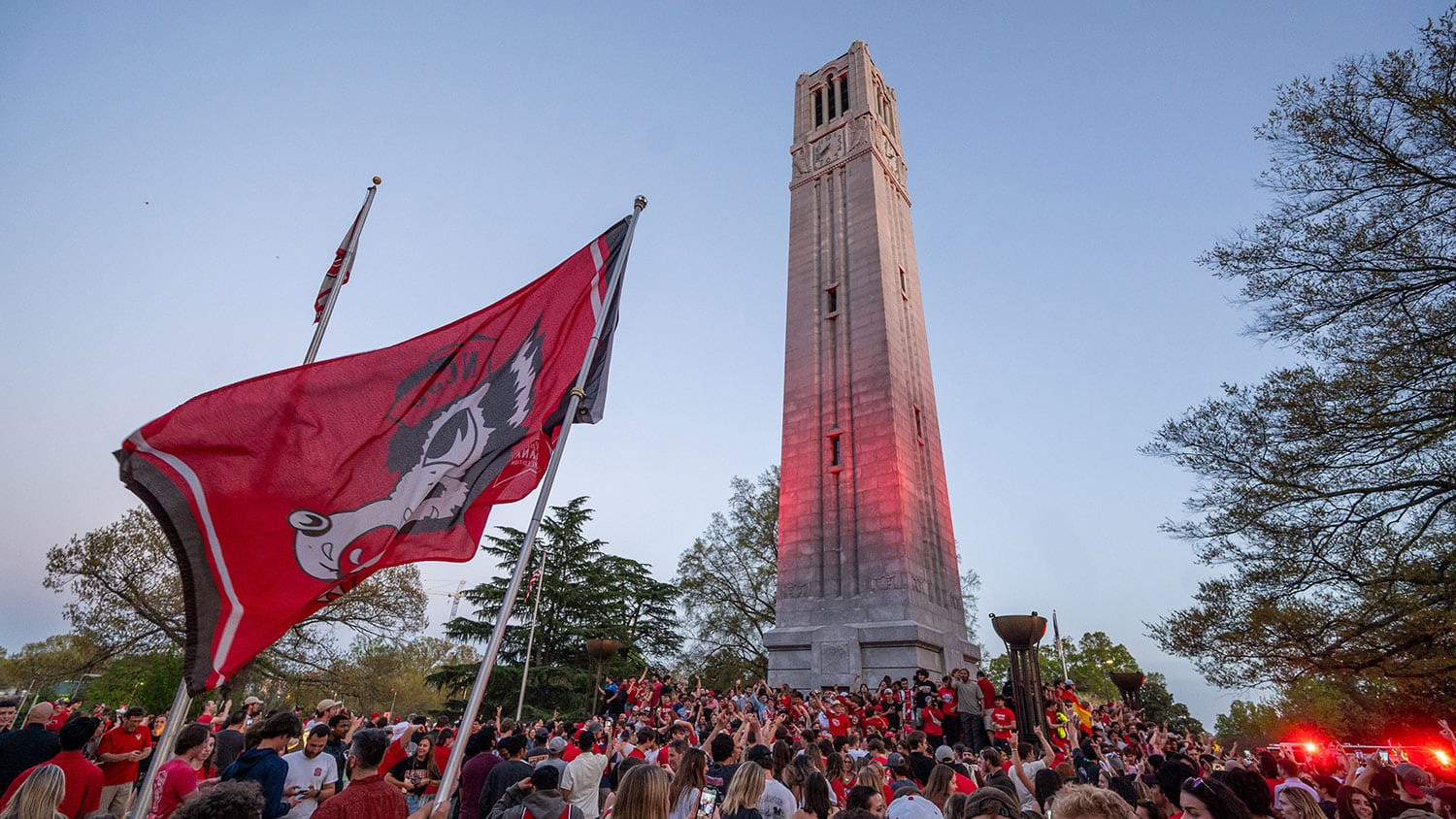Composer Sets the Macabre to Music

The first thing you notice about J. Mark Scearce, professor of art and design in NC State’s College of Design, is his bright smile, closely followed by his warm handshake and sunny demeanor. But once you learn more about his career as a music composer, you have to ask yourself: Why did such a nice guy compose a two-part ballet with vampires in part 1 and the plague in part 2, as well as an opera about voodoo, black magic and the Prince of Darkness himself?
“My composer friends tell me, ‘Dark must be your favorite color,’” Scearce says with a grin. “I suppose they’re right. I do dark well.”
Scearce’s darkness will hit the stage later this month when the Carolina Ballet performs his ballet Dracula, which will include a dramatization of Edgar Allan Poe’s story “The Masque of the Red Death,” Oct. 9-26 in the Fletcher Opera Theater at the Duke Energy Center for the Performing Arts in downtown Raleigh.

This will be the third time the Carolina Ballet has performed Scearce’s horror-themed ballet. In 2010 the ballet company’s artistic director, Ricky Weiss, approached Scearce with the idea of doing a Dracula ballet for the Halloween season. Weiss thought it would be a good idea to capitalize on the popularity of the Twilight movies and their sparkly-skinned vampires.
“What’s crazy to me,” Scearce says, “is that four years later there’s a new Dracula movie coming out, and there’s a couple of vampire TV series on the air. The vampire thing is still going.”
Sounds Like Transylvania
Scearce loved the idea of a Dracula ballet, and he threw himself into the project. As the work progressed, it became apparent that the piece wouldn’t be long enough to sustain an entire show, so Weiss suggested creating a ballet version of “Masque of the Red Death” to fill out the performance. Weiss did the choreography for “Masque,” and Scearce worked with choreographer Lynn Taylor Corbett on Dracula.
“In ballet, the choreographer runs the show,” Scearce says, “and these two choreographers were very different. Ricky Weiss is a very specific person. He gives me a certain length of time to fill, a certain number of dances, a certain emotional content, and I go away and I write. With Lynn it was quite different. She was very open, very free, very few limits. It’s like I tell my design students: If the client doesn’t create the box for you, you have to create the box for yourself. On Dracula, I created the box. On ‘Masque,’ the box was created for me.”
Weiss’ initial suggestion for Dracula was to do a modern update of the story, but Scearce decided it would be more effective to set the ballet in the book’s original 19th-century period. To enrich the ballet’s period atmosphere, he composed some of the score to be played on a Hungarian instrument called a cimbalom, which is like an oversized hammered dulcimer. “When you hear a cimbalom, it just sounds like Transylvania,” Scearce says. “You know exactly where you are.”

Scearce conveyed the creeping horror of “Masque” by using two male voices either chanting wordless phrases or singing a setting of the “Dies Irae” sequence from the Catholic mass. “Two male voices without words was just about the creepiest thing I could think of, and it surprised me how well it worked as an instrumental fabric,” he says. “The human element made it more horrifying somehow. Even the parts in Latin work as instrumental fabric. Most of us don’t know what it says, but through the performance, we know what it means.”
By the time the ballet opened in 2010, two of its three weekends had already sold out, qualifying it as a genuine fiscal success. The show has done well since then, and the company expects tickets to sell briskly this year too. Perhaps part of the show’s appeal stems from the fact that Scearce is very much alive.
“This is an unusual thing in the classical world, that all the music for an entire evening is by a single living composer,” he notes. “The ballet typically doesn’t do anything else like this; neither does the symphony. We go to contemporary art shows all the time, but what about contemporary music? This is one of those rare times when you can go to a contemporary music show too.”
Opera in the Works
Next year even more of Scearce’s dark imaginings will come to life on a North Carolina stage. His opera based on the novel Falling Angel — which was the basis for the 1987 film Angel Heart, starring Mickey Rourke and Lisa Bonet — will be fully staged in workshop performances on July 23-25, 2015, by the Janiec Opera Company at the Brevard Music Center Summer Festival in Brevard, N.C. Scearce was commissioned to write the work by the Center for Contemporary Opera, a New York City-based opera company. After the opera’s workshop performances in Brevard, it will receive its full premiere in New York at a later date.
When Scearce was offered the commission to write the opera in 2012, he wanted to leap at the opportunity, but there was just one problem: At the time, he was director of NC State’s Music Department, which was a full-time, 12-month position. “I knew I’d need my summers back if I accepted the commission, because writing a full-length opera is a herculean commitment,” Scearce says. That was when he entered talks with administrators in the College of Design to see if they could use a faculty member with a doctoral degree and a background in the arts.
“Fortunately, they welcomed me with open arms,” he says. “I feel very much at home here. This college teaches design thinking, and I teach creative thinking, which is very similar. In both cases you have to design or create with the client in mind. We help clients figure out what they want, and then we deliver it.”
Scearce also helps the designers in his classes learn more about the creative act itself — although a classroom lecture can only take you so far. Scearce readily acknowledges that creativity contains an inextricable element of mystery at its core.
“When you’re creating something, at some point the creative aspect of self takes over, and afterward you look back and think, ‘What happened?’ It’s really quite amazing when you don’t feel like you’re in the driver’s seat at all,” he says. “You put all the ingredients in the stew, you stir the stew, but then the stew does its own thing.”
- Categories:


